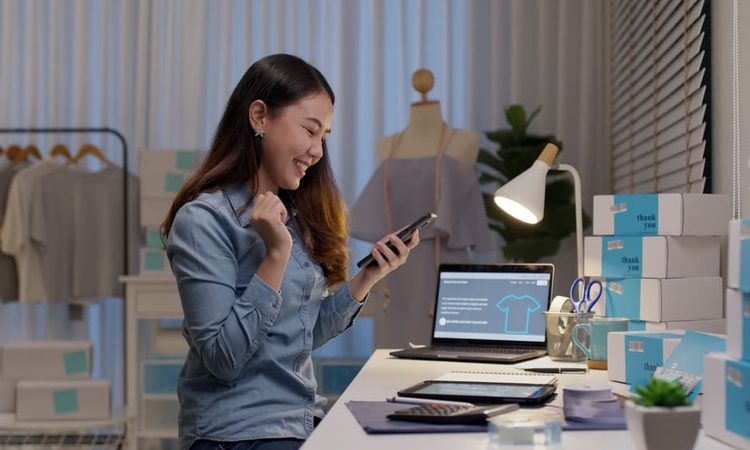Start a Vintage Clothing Business from Home in the USA
Dreaming of starting your own business but unsure where to begin? In the USA, the vintage clothing market offers an accessible opportunity to turn a passion into profit. By sourcing unique pieces and selling them at a higher price, individuals can build a successful venture without leaving their home. With flexible options and growing demand, this business model could be easier than expected. Explore how this process works and what it takes to get started.

How to Source and Sell Vintage Clothing Profitably
The foundation of any successful vintage clothing business lies in smart sourcing and strategic selling. Estate sales, thrift stores, garage sales, and flea markets serve as goldmines for authentic vintage pieces. Building relationships with regular sellers and arriving early to sales gives you access to the best inventory before competitors.
Authentication plays a crucial role in profitable selling. Learning to identify genuine vintage pieces from different eras, understanding fabric types, and recognizing designer labels increases your profit margins significantly. Research current market values using platforms like eBay’s sold listings and Etsy to price items competitively while maintaining healthy profits.
Online marketplaces like Poshmark, Depop, and Instagram provide excellent platforms for reaching your target audience. High-quality photography showcasing garment details, proper styling, and accurate measurements are essential for online success. Building a consistent brand aesthetic and engaging with your audience through social media storytelling helps establish customer loyalty.
Advantages of Starting a Business from Home
Operating a vintage clothing business from home offers numerous benefits that traditional retail cannot match. The most significant advantage is the elimination of overhead costs associated with commercial rent, utilities, and storefront maintenance. This allows you to invest more capital directly into inventory and marketing efforts.
Flexibility represents another major benefit. You control your schedule, allowing you to attend sourcing events, photograph inventory, and manage customer communications at your own pace. This flexibility proves especially valuable for parents, students, or those transitioning from traditional employment.
Tax advantages also favor home-based businesses. Portions of your home used exclusively for business purposes may qualify for home office deductions. Business expenses including inventory costs, shipping supplies, photography equipment, and vehicle expenses for sourcing trips can often be deducted from taxable income.
Key Steps to Launch Your Vintage Clothing Venture
Starting your vintage clothing business requires careful planning and systematic execution. Begin by researching your local market and identifying your niche. Some entrepreneurs focus on specific decades, while others specialize in particular garment types or designer pieces.
Register your business with appropriate state and local authorities. Choose a business structure that suits your needs, whether sole proprietorship, LLC, or corporation. Obtain necessary licenses and permits, and consider business insurance to protect your inventory and operations.
Create dedicated workspace in your home for inventory storage, photography, and shipping. Invest in basic equipment including a good camera, clothing racks, steamer, measuring tape, and shipping supplies. Establish relationships with reliable shipping providers and consider offering multiple shipping options to customers.
Develop your brand identity through consistent social media presence and professional presentation. Create business accounts on selling platforms and social media channels. Build an email list to maintain customer relationships and announce new arrivals.
Funding Your Vintage Clothing Business
Starting a vintage clothing business typically requires modest initial investment compared to other retail ventures. Most entrepreneurs begin with personal savings ranging from $500 to $2,000 for initial inventory and basic equipment. This bootstrap approach allows you to maintain full control while testing market demand.
Several funding options exist for those needing additional capital. Small business loans through the SBA offer competitive rates for established businesses with solid business plans. Microloans from organizations like Kiva Microfunds provide smaller amounts perfect for inventory expansion.
Credit cards can provide short-term funding for inventory purchases, especially when you can quickly turn items for profit. Personal loans from banks or online lenders offer another option, though interest rates may be higher than business loans.
| Funding Source | Typical Amount | Key Features |
|---|---|---|
| Personal Savings | $500-$2,000 | No interest, full control, limited amount |
| SBA Microloans | $500-$50,000 | Low interest rates, business mentoring included |
| Business Credit Cards | $1,000-$25,000 | Quick access, rewards programs, higher interest |
| Personal Loans | $1,000-$40,000 | Fast approval, fixed payments, moderate rates |
| Crowdfunding | Variable | Market validation, pre-sales opportunity, platform fees |
Prices, rates, or cost estimates mentioned in this article are based on the latest available information but may change over time. Independent research is advised before making financial decisions.
Building Long-Term Success
Sustainable growth in the vintage clothing business requires continuous learning and adaptation. Stay informed about fashion trends, collector preferences, and market demands through industry publications and social media. Attend vintage clothing shows and network with other sellers to expand your knowledge and sourcing opportunities.
Customer service excellence sets successful vintage sellers apart from competitors. Provide detailed item descriptions, respond promptly to inquiries, and handle returns professionally. Positive reviews and word-of-mouth recommendations drive long-term success in this relationship-based business.
Consider diversifying your revenue streams as your business grows. Some sellers expand into vintage accessories, offer personal styling services, or create content about vintage fashion. Others develop wholesale relationships with boutiques or participate in local markets and pop-up events.
The vintage clothing market continues growing as consumers increasingly value sustainable fashion and unique pieces. With proper planning, dedication to quality sourcing, and commitment to customer service, your home-based vintage clothing business can provide both financial rewards and personal satisfaction while contributing to the circular fashion economy.




